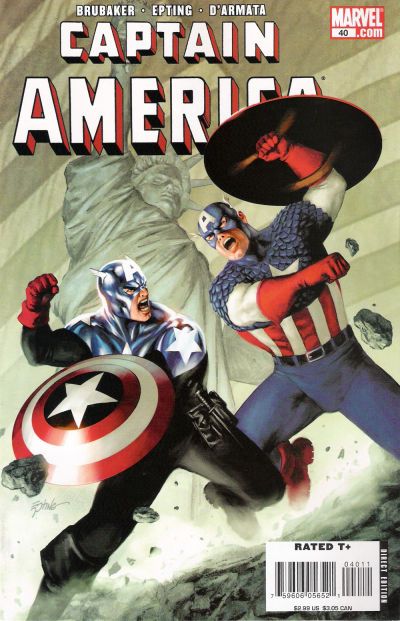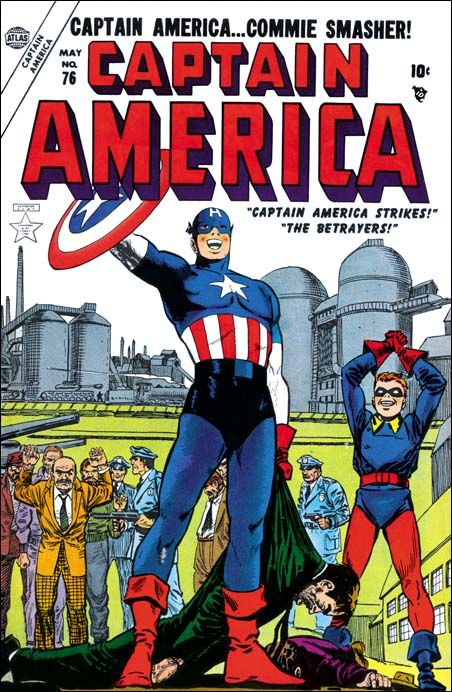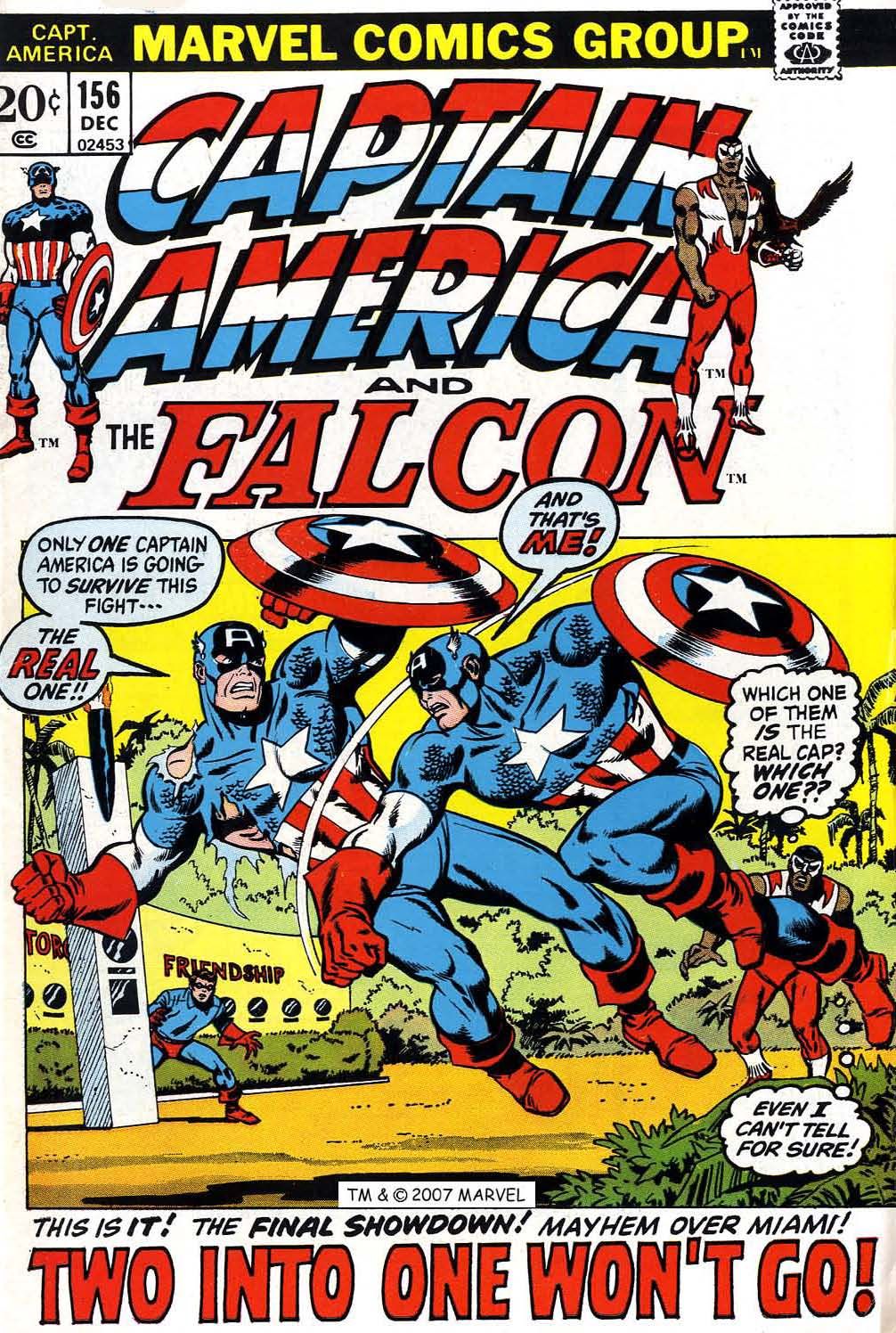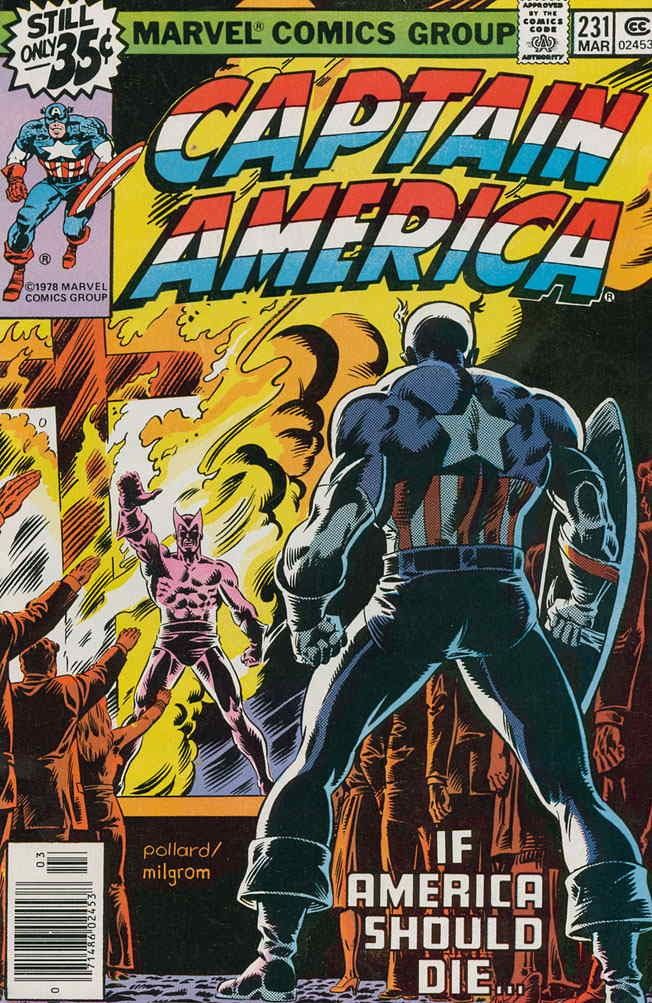Captain America: The Winter Soldier hasn't even opened yet and bits of information are already starting to surface about the hero's next solo film. Winter Soldier directors Joe and Anthony Russo are already attached to Captain America 3, and there are rumblings that the film could open as quickly as two years from now. Considering that possibly tight turnaround, it makes sense that screenwriters Christopher Markus and Stephen McFeely have already started thinking about just who Steve Rogers will come up against next.
“We’ve definitely set out on a more realistic road in the Cap movies, you know,” Markus told Den of Geek. “Even more grounded than in the other MCU movies. And so it kind of rules out Cap fighting the Dinosaur Man or something like that. There are some that aren’t gonna start and other ones that — I mean there’s a couple we’re playing with right now that we really want to take elements from. Which we’ll not reveal. … All I’m saying is psychotic 1950s Cap.”
Before you ask, yes, there was a Captain America in the 1950s even though Steve Rogers met an icy fate at the end of World War II, and no, his elevator did not reach the top floor. Here's a crash course in all things William Burnside, the Captain America of the Eisenhower administration.
Retroactive Duty
When the Avengers fished Captain America out of the ocean in 1964's Avengers #4, it was revealed that the hero had seemingly met his demise at the end of World War II and been preserved in ice until the modern day. The thing is, that story had never been told in the comics. In fact, Captain America survived World War II and appeared in a number of comics in the 1950s – including Captain America Comics and the incredibly-1950s-sounding Young Men and Men's Adventures. Avengers writer Stan Lee had even written some of those adventures, a fact that he says he forgot when he concocted the resurrected Cap's tragic new back story.
Years later, Captain America writer Steve Englehart was not content to let the 1950s stories exist outside of canon and instead chose to challenge the inconsistencies head on. In 1972's Captain America #153, he introduced the idea that every adventure that took place after 1953's Young Men #24 and before Cap's return in 1964 had actually starred a replacement Captain America and Bucky. Englehart brought the 1950s Cap back to active duty – and he wasn't brought back to play nicely with Steve Rogers and the Falcon.
Meet William Burnside
Born sometime before World War II, William Burnside obsessed over Captain America to a degree that even Cap fanboy Phil Coulson would say went too far. While writing his college thesis paper on Captain America, Burnside came across the Project: Rebirth files as well as a version of the super soldier serum that created Cap. Burnside took the next logical step – he changed his name to Steve Rogers and begged the FBI to make him the Captain America of the Korean War. He underwent plastic surgery to make himself look like Steve Rogers, but the FBI got cold feet about introducing a new Captain America.
The FBI forced Burnside to retire to Connecticut, where he became a teacher. His Cap-adoration was reignited when he met a student named Jack Monroe, a young man that bore a slight resemblance to Cap's teen sidekick Bucky. When the Red Skull returned and attacked the United Nations, Burnside and Monroe took the untested serum. They defeated the Red Skull, but the serum had a few side effects – namely psychosis. The government intervened and forced the pair into suspended animation, a state they remained in until the aforementioned Captain America #153.
The Grand Director
Following his fight with the real Captain America and the Falcon, Burnside found himself under the care of Doctor Faustus. Unfortunately for Burnside, he made a bad choice of healthcare practitioner, as Faustus was actually one of Cap's worst enemies. In 1979's Captain America #231, the manipulative criminal mastermind used his brainwashing techniques to mold the former Captain America into the Grand Director, the leader of a Neo-Nazi group called the National Force. After coming face to face once again with Steve Rogers, Burnside was able to shake free of Faustus' programming. The Grand Director sacrificed himself in a fire in order to save the day.
The Watchdogs
Burnside was thought dead until 2008's Captain America #37, when Sharon Carter uncovered the truth about the Grand Director's fate. Faustus and Red Skull had preserved Burnside in suspended animation — yes, again — while his severe wounds healed. After emerging from his deep sleep and shaking off his orders to kill Captain America – a job he'd already failed at twice – Burnside traveled the country to get a feel for what his proud nation had become. He wasn’t impressed, so he joined a right-wing terrorist group called the Watchdogs. As the leader of one Watchdog group, Burnside planned to blow up the Hoover Dam in an attempt to rally all of the other groups into a revolution. Captain America defeated the plot, and Burnside escaped.
Happy Ending?
Burnside's story came to a close in 2012's Captain America #19. After endangering even more innocent bystanders with his haphazard version of crime fighting, Burnside found himself in the hospital after losing a battle with a speeding semi-truck. Steve Rogers visited him, forgiving him of all the crimes he committed while under the influence of his psychosis-inducing serum. Burnside's death was then faked, and he was taken away to rehabilitate his body and mind in secret, in the hopes of finally giving him a normal life.
Burnside's story has a happy ending for now, but you can bet he'll make a comeback if he factors into Captain America 3. We just hope he tries to do something other than fight Captain America, because that's not something he's good at.




